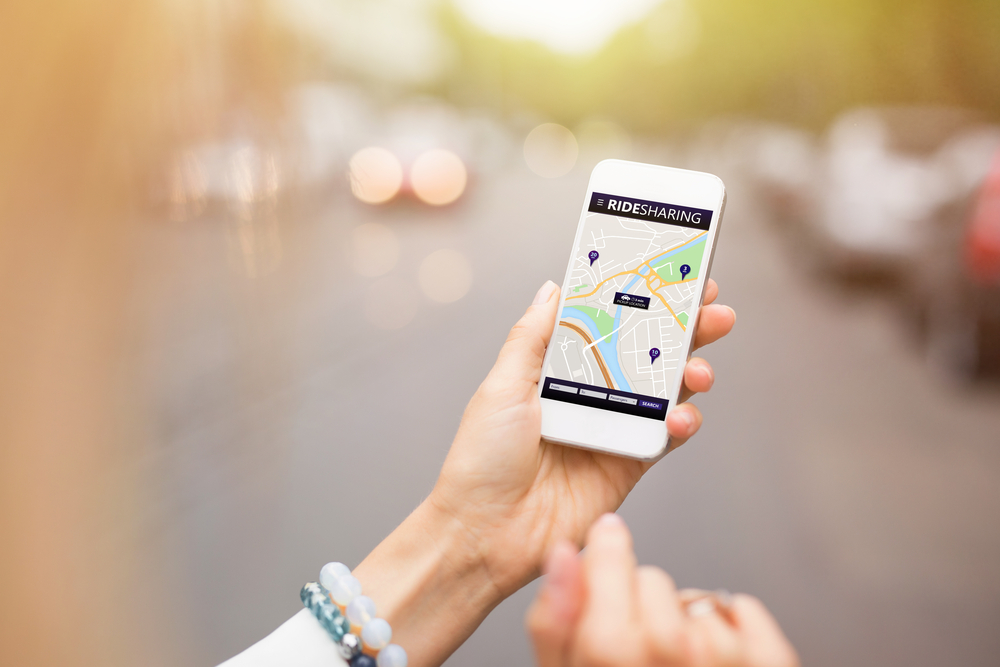
Am I Insured When I Use a Rideshare Service?
Wednesday, October 31, 2018
Ridesharing is becoming a popular business, with one-fourth of Americans currently driving for rideshare companies. Between your personal insurance policy and the insurance provided by Uber, Lyft, or another ride-hailing service, you may assume you and your passengers have full coverage in an accident. However, rideshare providers don’t provide end-to-end coverage, which is when drivers could be at risk.
The specifics involving coverage gaps can get complicated relatively quickly. However, most states now offer a rideshare endorsement that fills in rideshare policy gaps. Although drivers and passengers have insurance in most cases, rideshare insurance or an endorsement can protect under all circumstances. We’ll look at what personal and rideshare insurance covers, and when you might need extra protection.
What Personal Insurance Covers
In most cases, your private insurance policy will have exclusions involving commercial driving activities, including ridesharing. It’s critical to inform your insurance company that you will be driving for a rideshare service before hitting the road. It’s unlikely that your rates will increase. However, your insurance provider could cancel your policy if they find out you’ve been driving commercially without telling them.
Your personal insurance policy only covers you while driving privately. As soon as the rideshare app is turned on, the rideshare company’s policy takes over. Any claim on your personal policy while the app is running can be denied.
As ridesharing becomes more widespread, insurance companies nationwide are starting to offer rideshare endorsements that provide full coverage. Endorsements are often much more affordable than commercial insurance policies, which can run up to $8,000 a year. Currently, New York is still in the process of adopting rideshare insurance. Every other state offers one or more options for rideshare insurance carriers.
Insurance Provided by the Rideshare Company
As soon as a driver turns on the rideshare app, the rideshare company’s insurance policy takes effect. Typically, the rideshare process is divided into three phases.
- Phase 1 – The driver is parked or driving while waiting for calls, with the app turned on. The driver is either just logging in or is awaiting the next call after a drop-off.
During phase one, the rideshare company provides drivers with contingent auto liability coverage. This limited coverage typically includes $50,000 coverage per person for bodily injury, $100,000 total bodily injury, and $25,000 for personal property. The driver would pay any excess damages out-of-pocket. Since rideshare companies offer limited coverage for this phase, it’s known as a gray zone.
- Phase 2 – This period includes the time between receiving a call and picking up a passenger.
This phase is another gray area, with rideshare companies providing limited protection during this period.
- Phase 3 – This phase includes the time when the passenger enters the vehicle until the passenger is dropped off.
This timeframe is covered by ridesharing company insurance policies with typical coverage of $1 million in liability, contingent collision and OTC (other-than-collision) coverage with a $1,000 deductible. $1 million in uninsured or underinsured motorist injury is also included.
Even with coverage, drivers should try to prevent accidents whenever possible. Follow this link for Safety Tips for Ride Sharers and Drivers.
Why You Should Consider Additional Coverage
Although rideshare services offer limited coverage, drivers are highly advised to consider a rideshare-friendly policy. With coverage, especially limited during phase one, drivers without rideshare insurance risk having to pay for an accident out-of-pocket.
Rideshare drivers should remember that their personal insurance policy will not cover them while driving for commercial purposes. In addition to a rideshare endorsement, drivers may also consider:
- Gap coverage – This policy will include more than the actual cash value if your vehicle becomes totaled.
- Medical payments coverage – Helps pay for medical bills after an accident. This coverage is a smart investment for drivers without health insurance.
Find out what rideshare insurance covers in the following article, What You Need to Know About Rideshare Insurance.
Drivers who go without rideshare insurance are putting themselves, their passengers, and their finances at risk. With rideshare policies readily available in nearly every state, drivers no longer have to fear gray zones and coverage gaps. Rates for endorsements typically run at between 10% and 20% of your current premiums. However, drivers should consult their insurance provider for an exact quote.
To learn more about Rideshare Insurance, contact the professionals at ProtectiveAgency.com at (877) 739-9367. Our licensed insurance agents will be happy to answer any questions you have.
